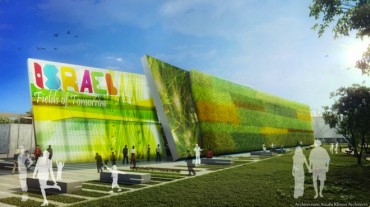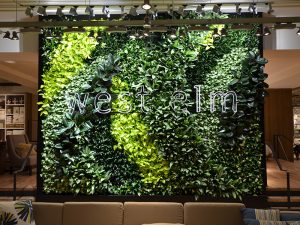
Restaurant furniture with a green wall of plants makes for a much more sustainable dining experience. Better breathing too.
Furniture can be seen as both a functional as well as aesthetic element of any restaurant’s interior design. The functional aspects of this type of thing have to do with offering customers comfortable seating arrangements that can allow them to dine with ease. On the aesthetic side of things, the kind of design that your furniture has been assembled with as well as various other visual cues can have a huge impact on how people feel when they first end up entering your eatery.
A key aspect of modern restaurant trends has involved an amalgamation of sorts of functional as well as aesthetic sensibilities. Basically, functional elements are starting to be incorporated into the design of chairs for restaurants among other pieces of furniture. Tables are being optimized in a similar manner as well, and it’s all about trying to provide the customer with an experience that would facilitate virtually all of their needs being met. We have a number of suggestions that can successfully integrate function with style, and there is clear potential for these suggestions to inculcate a paradigm shift in the industry that could change the way we dine forever.
A great way to start thinking functional design is to start considering the needs of the customer. While smoking can sometimes be banned in indoor spaces, a number of restaurants manage to get special dispensation in this regard. What’s more is that there usually aren’t any restrictions placed on smoking in outdoor settings which means that a lot of the customers that you might be getting are going to look for a dining experience that they can accentuate with a cigarette once the meal is over.
This offers a very unique opportunity for the savvy restaurateur to make it easier for these customers to get their smoking fix. One great example here would involve ashtrays and the like. You probably give your customer an ashtray that they can use to dispose of their cigarette butts, but what if this was incorporated into the furniture itself? You can quite easily carve an ashtray of sorts into the surface of the table, or potentially into the armrest of the chair as well. This provides customers with easy access to an ashtray whenever they need it rather than having to signal to a server and subsequently waiting until said server has the time to bring them what they need.
If you really want to make this ashtray functionally sound, you can add a layer of metal into it. Wood tends to burn if you press something hot against it. This can result in an unpleasant odor as well as unsightly blemishes appearing on the furniture. Hence, it makes sense to add metal to the built in ashtrays, or perhaps some kind of lacquer if you feel like metal might spoil the overall look of the wood. The point here is to make it easier for the customer to enjoy their meal the way that they prefer, so whatever you can do to facilitate such a thing is great.
The concept of functional design doesn’t end here. It can go far beyond just facilitating the needs of the customer and can become something that makes the life of a restaurant owner much easier as well. A number of space saving mechanisms can be added to furniture that would make them significantly more functionally sound. Once again, all you need to do to start conceiving ideas in this vein is to look at problems you might face with regards to your furniture.
Crafting chairs that fit in with the dimensions of your tables can be great for example. This would result in a situation wherein the chairs would not be sticking out at awkward angles when they are not being used. Rather, they would fit into the table perfect, and can be extracted whenever the need arises. This is a great representation of how functional design can improve aesthetics as well, since you can clearly imagine how table optimized chairs would look really good since they would create clean lines whenever they are stowed away. This would provide both space saving as well as aesthetic advantages.
If you want to take functional design in a slightly different direction, you could consider adding wheels to your chairs or tables. This can be a bit tricky to pull off, but if done right it can make restaurant organizational logistics an absolute breeze. You need to be able to shift the layout of your furniture at the drop of a hat in situations where you suddenly get a large batch of customers and you need to move things around in order to make space for them.
One thing that you might want to do if you want to add wheels to your furniture is put a locking mechanism in place as well. It can be very frustrating for a customer if their chairs or tables keep shifting while they are trying to enjoy a meal. A locking mechanism can be used to prevent the wheels form moving, thereby keeping the furniture stable and in one place.
As you can clearly see, the sky is the limit when you start thinking about furniture design from a functional perspective. Postmodern furniture design doesn’t have to treat functionalism and aesthetics as two separate entities. Rather, it proves that thinking of the two holistically can often result in some pretty strong results, and a number of restaurants are already starting to see the advantages of this type of thing. You can factor the needs of your niche into any functional design elements that you try to implement.



